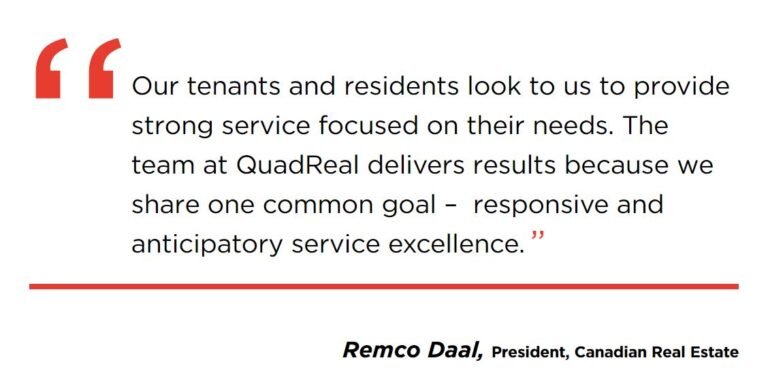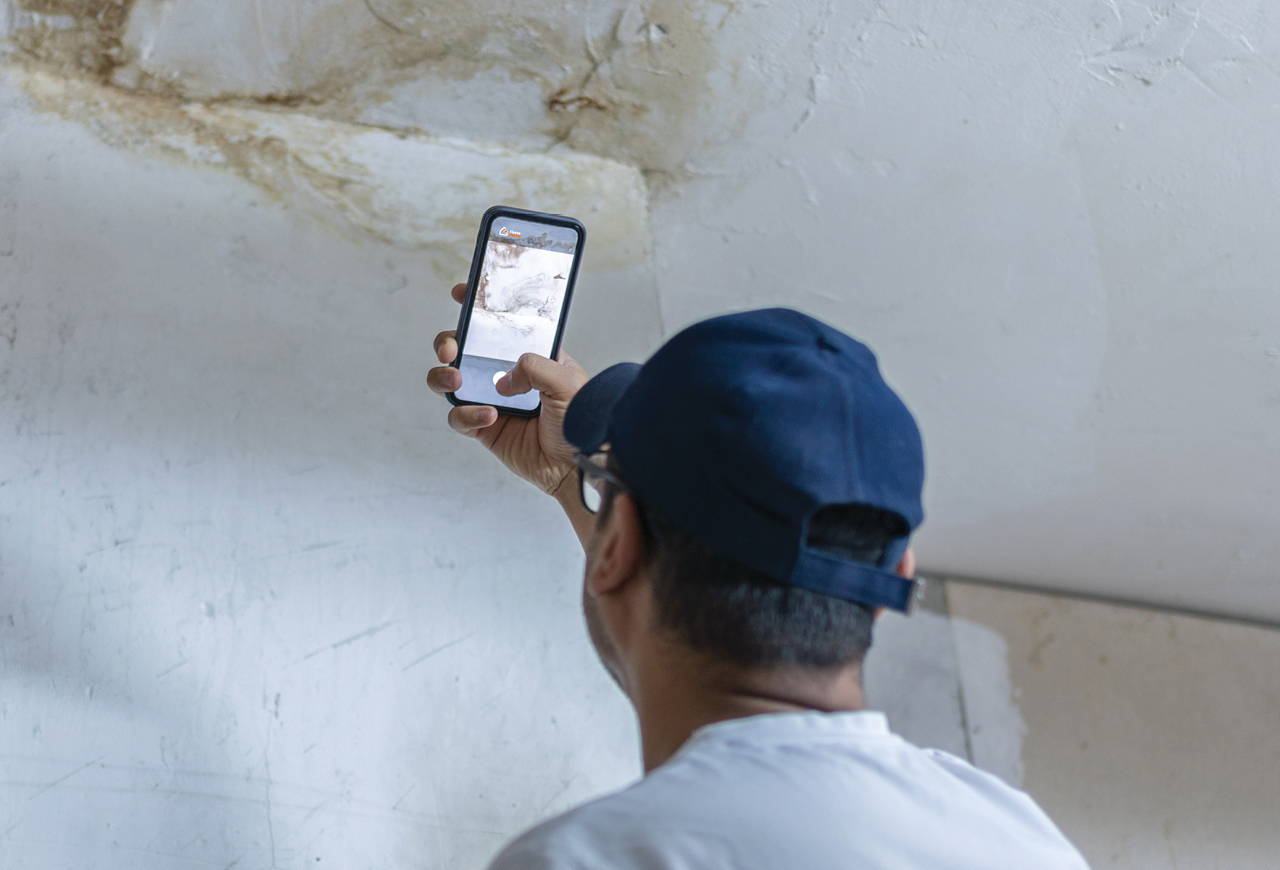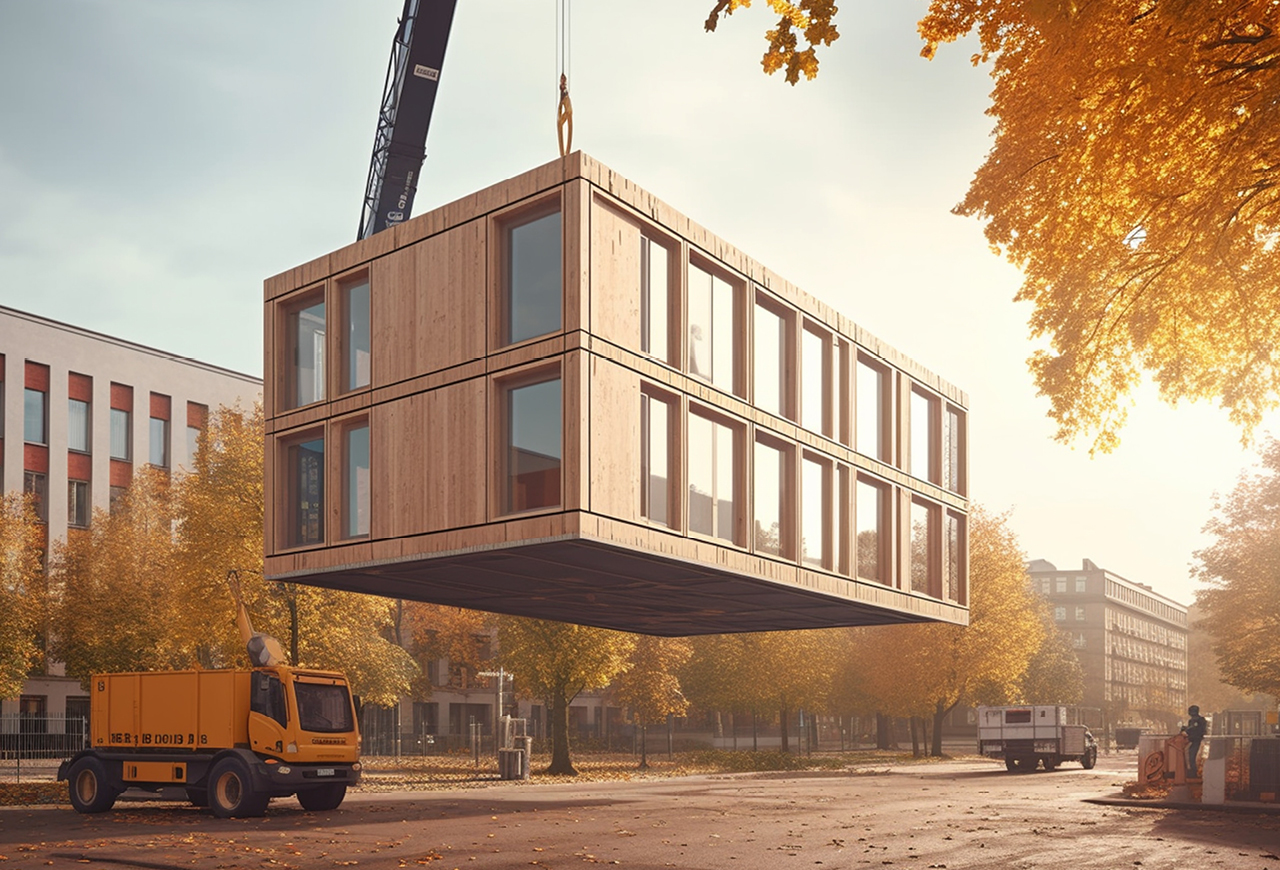As Vice President of Smart Building Technology and Digital Innovation for QuadReal Property Group, Thano Lambrinos specializes in the adoption and implementation of technology within the built environment. From connectivity infrastructure to IoT sensing devices to cybersecurity, he finds friction points within real estate and identifies the technology underpinnings that help remove or ease those points of friction. In line with R-LABS’ focus on problem-based solutions and high-value outcomes, the article below explores how we can implement smart systems that mutually benefit the organization, its staff and its customers.

In recent years, there has been an influx of activity in the PropTech space, but these solutions don’t necessarily align with our current businesses. Because of this, QuadReal focuses on setting up the foundations for long-term success. In the smart building space, we’re ensuring that we implement the foundational infrastructures that will allow us to quickly and effectively adapt to the changes that technology is bringing to our spaces. From operational improvements and tenant experiences, we need to ensure that our core infrastructures support all of the new technology coming down the pipeline.
Smart Buildings Start in the Field
Innovation doesn’t come from the corporate level. It comes from the people on the front lines who see the problems firsthand. Foundationally, I have a good idea of what we want to achieve, but when it comes to interacting with customers and properties on a day-to-day basis, our front-line people are the experts. We encourage them all to come forward with ideas and different ways of doing things so that we can support them and improve our position in the market.
I would encourage any executive team to see firsthand what the real challenges are in running the business, and then figure out what technology solutions are available that will help the front line do their jobs even better. This approach is no different than what we’re trying to do with our customers. If we want to provide better experiences within our buildings, we need a complete picture of how we’re doing and where we can improve.
Taking a Problem-Focused Approach
Understanding the current state of the market, QuadReal’s approach centres around foundational solutions and outcomes. We ask ourselves what outcomes we want for our customers and what outcomes we want to achieve from an operational perspective. From there, we can start identifying the underpinning technologies that help us get there.
Generally speaking, real estate is very susceptible to “gadgetization.” We often get away from what is important to us – which is being able to run facilities as economically and efficiently as possible while providing exceptional customer experiences. If we keep our focus on the friction points rather than the technology, we can identify technologies that impact our businesses and actually move the needle.
As a corporation, we have to work backwards from the outcomes we want to achieve, establish the business drivers, define the KPIs, and then appropriately seek out technologies and vendors that can help us realize those goals.
Laying Smarter Foundations
In a smart building project, the digital foundation is as important as the physical one. Foundational technologies enable us to create environments where we can quickly test if a point solution delivers the value and if it has the power to scale across our portfolio. As they say at R-LABS, it’s about standing things up quickly and failing fast.
QuadReal’s approach focuses on connectivity, software and data solutions that create high-value for both our company as an operator and our customers. Some of the key components of our foundational solutions include:
Gigabit Passive Optical Networks (GPON) for cost-effective and scalable connectivity deployment
IoT devices integrated into multiple building systems for high-resolution data streams
Core software-driven solutions for plug-and-play environments
In addition to these foundational components, QuadReal is also deploying various use-cases. For example, we’re using video analytics from our existing CCTV and video surveillance networks for security, traffic flow or people counting. We’re also piloting an AI-based energy optimization tool that takes in data from multiple sources and adjusts autonomously to maximize cost reduction and energy reduction. Sitting on top of our core infrastructure, these point solutions are designed to leverage the foundational components and deliver high-value outcomes to the organization.
The Future of Smart Buildings
Movement in the space has been slow, and there are a lot of constraints from a physical perspective – especially when we’re dealing with existing and legacy buildings. That said, I think that we’ll see a lot of movement in connectivity solutions as we enter into the era of 5G. As real estate companies and developers start to figure out what 5G means for them, we’ll see them enabling infrastructures within their built environments for 5G and satisfying use-cases for this technology.
We’ve also done some internal surveys that show that there is a lot of interest in the commercial space for experiences that mirror the experiences people have at home. QuadReal is zeroing in on the idea of “delivering the neighbourhood.” In our multi-family residential properties, we look to extend connectivity from the suite to the building to deliver richer customer experiences. We’re looking at voice-activated tools to interact with the building without leaving the suite. Imagine asking Google or Alexa, “Is the party room available and can I book it?” or even real-time information like, “How busy is the gym right now?” These integrations between the suite and building enhance spaces and empower the customer to interact between environments.

Lastly, we have a very intense focus on cybersecurity as we start to integrate smart systems across asset classes. It’s a big challenge for real estate because it’s not something that the industry has had much of a focus on or dealt with. To stay on the forefront of cybersecurity, QuadReal sits on a board of real estate experts with BOMA’s Cyber Security Committee, as well as a group called the Real Estate Cyber Consortium. RECC is made up of the biggest real estate companies in the world who get together to figure out how we can react and position ourselves and our vendors to address cybersecurity challenges appropriately.
Taking the First Steps
When it comes to digital transformation, it’s no secret that we are in a very slow-moving industry, but we want to change that image. While change may take time, it is both necessary and inevitable. We need to start laying the foundations that will allow our asset classes to adopt and successfully implement the technologies that our customers have come to expect. Regardless of the technology, QuadReal’s goal is to create and sustain environments that bring value to the people and communities we serve – now and for generations to come.




